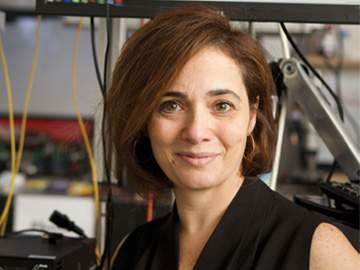
Mid-July 2023 marks the one-year anniversary of the first full-color images and spectroscopic data from the James Webb Space Telescope (JWST). As the cover article of this issue of Optics & Photonics News describes, JWST has continued to dazzle with new data, discoveries and perspectives since the unveiling of those first images. Everyone in the optics and photonics community should take pride in the central role light science and engineering have played to enable this new view of the universe—and of humanity’s place in it.
The anniversary of JWST’s first results is a fitting moment to reflect on scientific discovery’s sometimes long road. Those first images, after all, were the result of a three-decade-plus journey since the telescope was initially proposed in 1989—a journey characterized by cost increases, launch delays and controversy about whether the spacecraft’s value could ever justify the trouble.
Meanwhile, scientists and engineers methodically forged ahead. They patiently designed, built and tested space-grade imaging technology, infrared mirrors and optical instruments that previously did not exist. They integrated those systems into the most complex space observatory ever built. Between December 2021 and July 2022, they got the spacecraft off the ground, deployed in space and orbiting around the L2 Lagrange point 1.5 million km from Earth—and, across that vast distance, configured the telescope for first light. With a year of results now back from JWST, and two decades of observation yet to come, few today doubt that the wait was worth it.
As humans, we often are drawn to visionary ideas and breakthrough results. But the long-term patience and discipline that leads to such breakthroughs is science and engineering’s hidden story. Another case in point: Some 42 years ago, in a celebrated conference talk, Richard Feynman suggested the possibility of a fundamentally new kind of computer based on quantum principles. He added, with some understatement, that creating such computers “doesn’t look so easy.” But as another feature article in this OPN issue suggests, four decades after Feynman’s talk—in the wake of efforts by scores of research groups on quantum hardware and software—quantum computers, along with quantum sensors and cryptographic systems, are making their way into the commercial sphere.
These examples underscore that science is a “team sport.” But the patience and passion of individuals also play an important role in a technology’s journey from initial promise to commercial reality. A third feature in this issue shines the spotlight on 10 “entrepreneurs to watch,” who are building businesses centered on optics and photonics technology—often the result, again, of years of patient, incremental teamwork in the lab.
For me, it’s exhilarating to think that the people behind some of the new research I learned about this past May at the CLEO Conference in San Jose, CA, USA, could be the entrepreneurial stories of the future. The meeting was an especially meaningful opportunity to see old friends, to brainstorm with colleagues—and to absorb new discoveries firsthand. With patience and long-term commitment, who knows where those discoveries might lead?
—Michal Lipson,
Optica President
View German, Chinese, French, Japanese and Spanish translations of this message:
